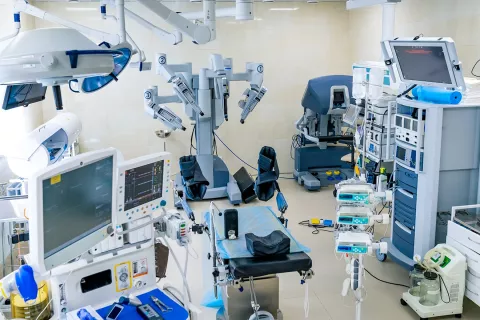
CE marking is mandatory for all devices that are to be sold in the European Union (EU) countries. Similarly, In Vitro Diagnostic (IVD) devices must also obtain a CE marking and undergo a rigorous approval process to demonstrate their safety and efficacy. They have to abide by the requirements mentioned under the EU In Vitro Diagnostic Device Regulation (IVDR) 2017/746. Each device has a specific set of requirements and procedures that they need to follow. In fact, the Regulatory requirements can be complex and challenging to follow. Here are the top five (05) best practices one can follow while preparing for Class C IVDs Regulatory approvals:
- Developing a Regulatory Strategy: It is important to clearly understand the Regulatory landscape, including the requirements and timelines for compliance with the EU IVDR. This includes understanding the different classes of IVDs and the requirements for each Class, as well as the requirements for conformity assessment and clinical evidence.
- Understanding the Classification System and Implementing Rules: Keeping an apt interpretation of the classification criteria is a must. Classification is based on the risk criterion, and the moderate- to higher-class risk IVDs fall under Class C. Further, all the IVDs applicable to rule 4 are classified as Class C, except in some cases. In some scenarios, IVDs applicable to rules 2 and 3 can also be classified as Class C. The Medical Device Coordination Group (MDCG) guidance document lays out a detailed explanation of the implementing rules.
- Devising a Robust Data and Document Management System: The EU IVDR now requires a huge amount of data and documentation to be presented to obtain a CE marking for IVDs. Developing a robust management system for data and documentation is of utmost importance in this regard. Manufacturers of Class C IVDs should be able to provide comprehensive documentation to demonstrate that their device meets the IVDR requirements. Preparing a checklist and performing a gap analysis for class C IVDs to identify missing data can avoid delays in obtaining Regulatory approval or withdrawal of the device from the market. The checklist includes clinical data, performance evaluation data, a summary of the safety and performance of the device, technical documents, declaration of conformity, shelf life, post-market surveillance data, quality management documentation, etc. Further, it is always advisable to draw up a list of documents that need to be prepared and submitted during the different phases of the IVD Regulatory lifecycle.
- Following the New Labeling Requirements: The EU IVDR introduced a new set of requirements for the labeling and packaging IVDs. This also includes requirements related to the Unique Device Identifier (UDI) labeling system. In accordance with EU IVDR 2017/746, now the UDI labeling must be affixed on the IVDs and must be documented in the Quality Management System (QMS) file.
- Being prepared for Post-market Surveillance (PMS) Activities: The EU IVDR has emphasized a great deal on PMS activities. It requires manufacturers to set up a PMS system to monitor and assess the safety and performance of the IVDs even after they have been placed in the market. For Class C IVDs, manufacturers will be required to establish a PMS plan detailing the protocols and measures that will be taken for the activities. The PMS plan is part of the technical documentation and must be submitted during the pre-market Regulatory approval process. Further, for Class C IVDs, the Periodic Safety Update Reports (PSURs) must be updated at least annually and are to be produced to the notified bodies/competent authorities as and when they are requested for. In addition, manufacturers are also required to work on Post-Market Clinical Follow-up (PMCF) reports.
Obtaining a CE marking for Class C IVDs under EU IVDR 2017/746 is quite challenging, given the stringency and complexity of the requirements that Class C IVDs must adhere to. It is essential to thoroughly understand the Regulatory landscape to minimize errors. Taking help from Regulatory experts is always advisable.
Freyr can help you navigate through these obstacles and assist you in successfully launching your Class C IVDs in the EU Market. Schedule a meeting with us to learn more!









